90s Chowking Beef Wanton Noodles Recipe
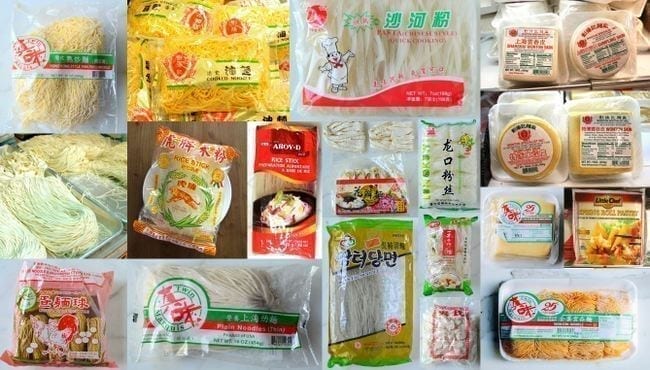
Welcome to our Chinese Noodles and Wrappers ingredients page!
There's a broad variety of fresh and dried noodles used in Chinese cooking, and here we'll try to cover the most common of this broad category. Asian and Chinese noodles can and often are used interchangeably, and you will see that we use a variety of brands and types in our recipes. We also provide some information on dumpling, potsticker, wonton, and egg roll wrappers. As always, let us know if you don't see something you're looking for, and we'll do our best to add it.
Read on to (finally) get some serious knowledge of How to cook with Chinese noodles and wrappers!
If you're looking for more information on other Chinese Ingredients, go to our main Chinese Ingredients Glossary page to review the different categories and easily find what you're looking for.
Fresh Hong Kong Style Egg Noodles
These yellow pan-fried noodles (also known as chow mein noodles) come in different varieties and are one of the more popular Chinese noodles. Two of the more prominent ones are won ton noodles, which are thin and usually lightly coated in flour, and lo mein, which yes, can be found in many a take out container across the country. You can find them in the refrigerated section of the Chinese grocery. These fresh noodles must be cooked in boiling water for about 30 seconds, rinsed, and drained before pan frying. But with this 2-step process, be sure not to overcook them or they won't crisp up properly in the pan or wok, even worse–they'll be straight up mushy.
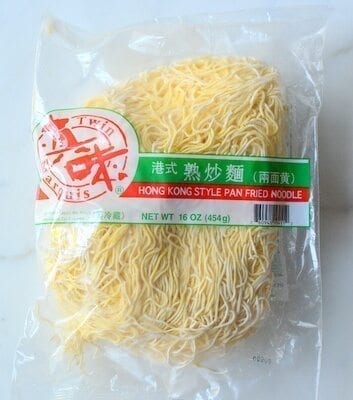
If you can get them, these fresh noodles are the noodle of choice for dishes like Soy Sauce Pan Fried Noodles and Gai See Chow Mein.
This is one of our latest Hong Kong style pan fried noodle recipes – Hong Kong Style Shrimp Chow Mein Noodles, .
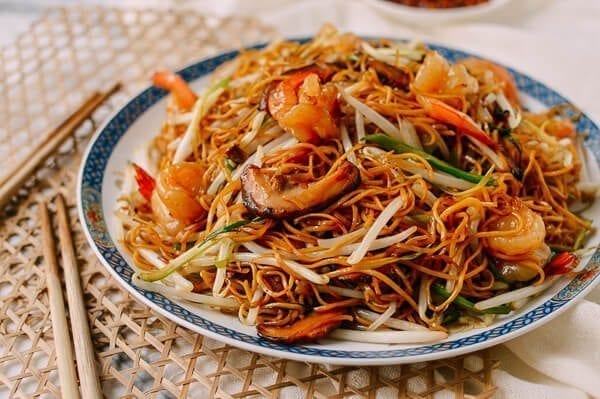
Dry Hong Kong Style Noodles
You can also find the dried version of Hong Kong style egg noodles, which are a great addition to your pantry. Just cook for a few minutes in boiling water, rinse under cold water, drain, and you're ready to throw them into any of our Hong Kong noodles dishes like Hoisin Pan Fried Noodles, or classics like the Cantoneses Soy Sauce Pan Fried Noodles and Pan Fried Noodles with Chicken.
We use a variety of brands, depending on what is available at our local Asian grocery store, but they are definitely less expensive when purchased locally. For those of you who don't have local access to Chinese groceries, they are also available on Amazon.
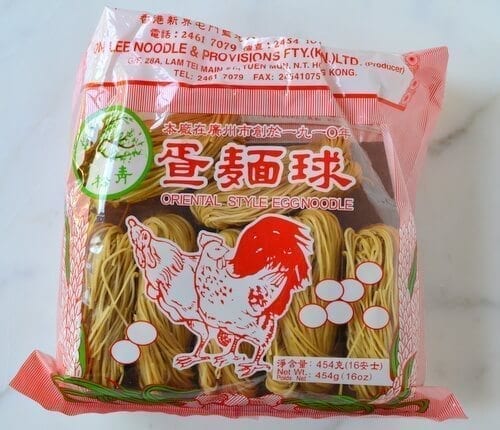

Kamfen Hong Kong Style Egg Noodles, 16 Oz. Packages (Set of 2)
Fresh Noodles
Then of course, there are the freshly-made noodles. We haven't seen too many places that offer these in the US, but these freshly-made noodles were everywhere in China. These require boiling, rinsing and draining before use. While fresh really is best, frozen and refrigerated fresh noodles are also really good. We'll talk about some different kinds of fresh noodles that you can find in grocery stores. They may not be as fresh as when you're watching a guy hand pull them in the back kitchen, but the taste is almost as good!

Lo Mein Noodles
Most Lo Mein noodles require boiling whether they are fresh or dried. However, you can also find fresh cooked fresh lo mein noodles in the refrigerator section of some Asian markets, which eliminates the extra step of boiling noodles. It makes weeknight meals like Vegetable Lo Mein or Beef Lo Mein even more convenient and fast! These Lo mein noodles are quite often used in popular Hokkien noodles dishes found in Singapore and Malaysia but these dishes vary from place to place and country to country. Locals use different white non-egg noodles or whatever is available but the common denominator is that Hokkien noodles all have similar thickness and texture to that of lo mein noodles.

Pictured below are two examples of uncooked fresh Lo Mein noodles that have to be cooked in boiling water for about 40 seconds or so before they are taken out, rinsed briefly so they do not stick together and then drained thoroughly before cooking. Don't mistaken these raw noodles for the cooked version or you will have a starchy, sticky lo mein and wonder what went wrong! Cooked noodles are clearly labled as you can see the picture above and while the uncooked noodles are not explicitly marked, you tell they are raw by the flour on the noodles and the from the directions that clearly say they must be cooked in boiling water first. Home cooks and lo mein lover beware!
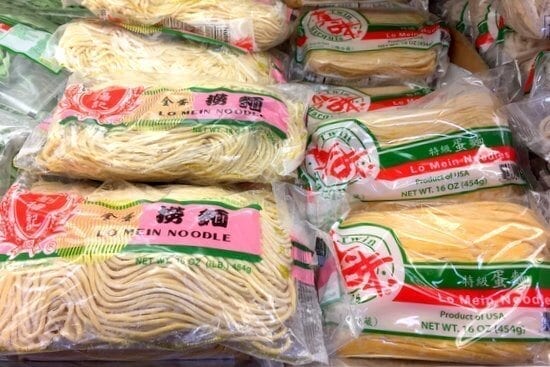
Buy these lo mein noodles and make your own better-than-Chinese-takeout Shrimp lo mein at home!
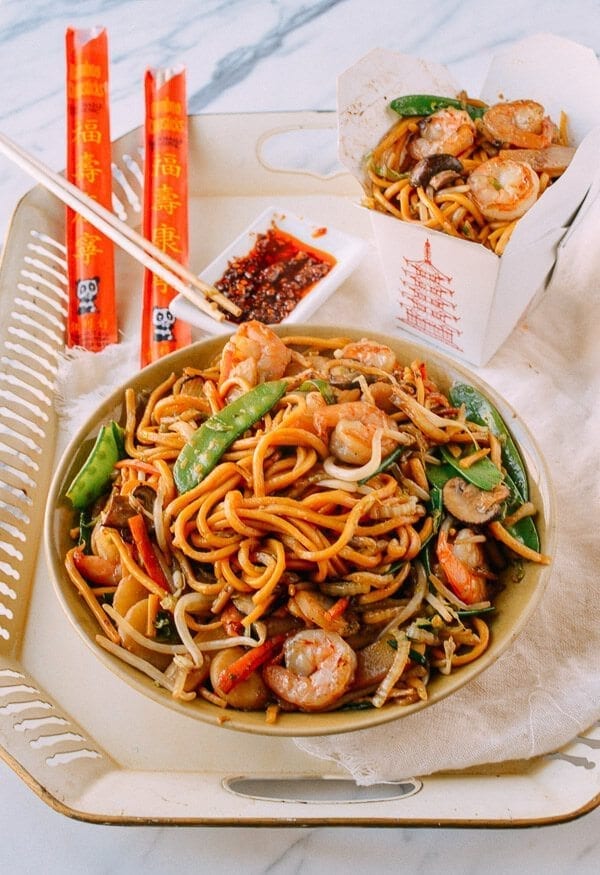
Fresh White Vegetarian Noodles (egg free)
These plain noodles are used in many of our recipes, but the brand shown below is just one of many brands we have tried. Typically, these noodles are vegetarian with no eggs added, but always check the package if you are a strict vegan or vegetarian to make sure you know what you are getting! We sometimes use these noodles as a quick stand in for the lo mein noodles pictured above, as both the recipe and the noodles are quite versatile. Drop these noodles in pot of boiling water and cook until just done so they are perfectly chewy and al dente. Rinse with warm water to prevent sticking, drain, and you're ready to continue with your recipe!
Bian Dou Men Mian (Steamed Noodles and Green Beans) is one of our favorite recipes for this noodle because the unique steaming method cooks the noodles perfectly, but then there are always the old standbys of Cold Noodles with Shredded Chicken, Soy Scallion Shanghai Noodles and 15-Minute Chinese Hot Oil Noodles (You Po Mian)!
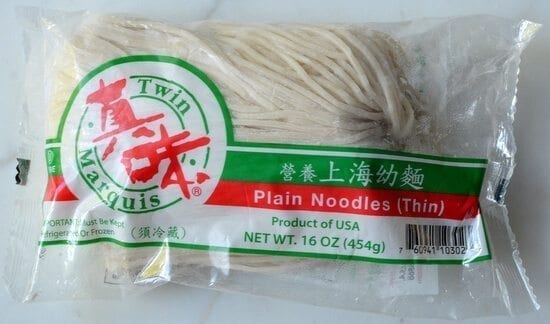
Fresh Wide Egg Noodles
Sometimes you just want a wider noodle for stir frying or maybe you want a traditional deep fried noodles like they used to serve in Chinese restaurants. Remember those fried noodles that would come out with the hot tea and menus after you sat down? As you were talking and looking over what to order you dipped these crunchy fresh fried noodles into duck sauce (plum sauce) and hot mustard?
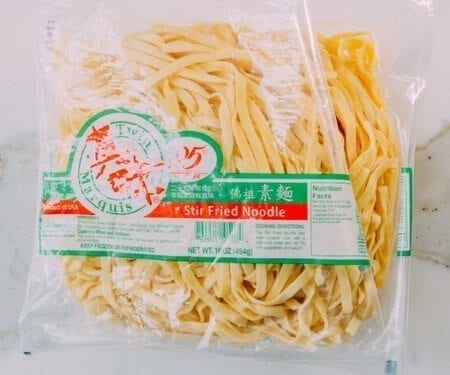
These are it and we used them in the retro American Chicken Chow Mein recipe. This was a time when chow mein meant fried noodles that are sprinkled over Chicken and mixed Chinese vegetables.
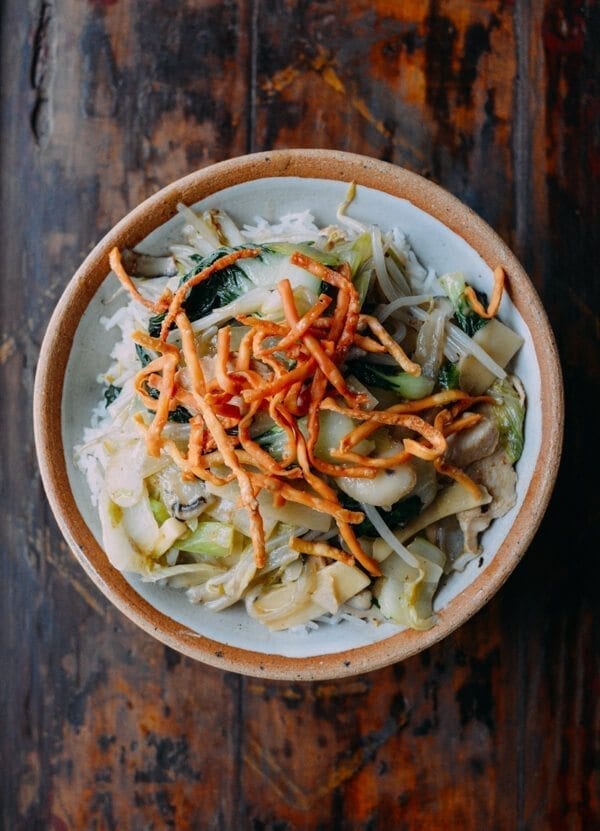
Rice Vermicelli
These rice noodles, sometimes labeled as "rice sticks," and called "mei fun" or "mai fun," are thin, brittle, and white. We like these because they're easy to prepare–just soak them in lukewarm water for ten minutes before using in noodle stir-fries. They come in large rectangular blocks in plastic bags, and, generally, our recipes use half of a 16 ounce package for one dish. Store any unused noodles in plastic bags in a cool, dry place.
There are a number of brands available on Amazon, but we haven't tried them all. Also, finding these can be a bit tricky as there is quite a bit of variation in what are called rice sticks and rice vermicelli. Moreover, prices for these vermicelli noodles are pretty steep on Amazon, so the best bet is to try to find them at a local Asian market.

These noodles are used in Singapore Mei Fun and Vegetable Singapore Noodles – both easy-to-prepare classics. You also can't go wrong with this deliciously easy-to-make Xiamen Mei fun dish pictured below!
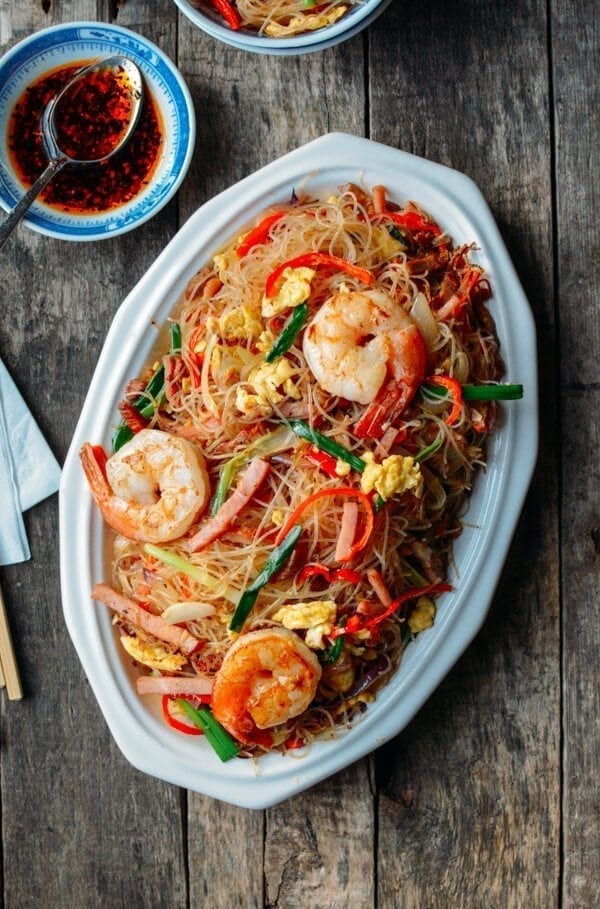
Rice Noodles for Pad Thai
This version of rice noodles, which we tend to use almost exclusively for Pad Thai, are wider than vermicelli, but the preparation is similar. Usually, you can't go wrong following the package instructions for cooking, but with this type of noodle we use a different method. The directions will say to boil the noodles first, but since there's nothing worse than a mushy noodle, we generally like to soak the noodles in lukewarm water for up to twenty minutes, drain them, and then add them to stir-fries. This is the way we prepare them in our Shrimp Pad Thai recipe.
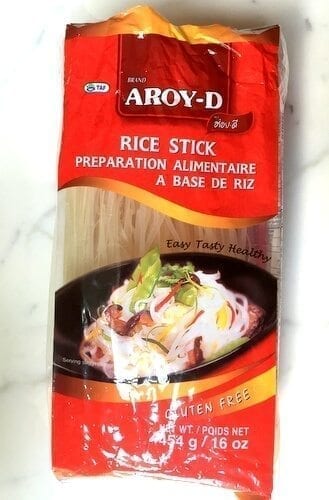
We found this brand on Amazon and would probably buy these if we were in a pinch!

Annie Chun's Pad Thai Noodles, 8-Ounce Packages (Pack of 6)
Pick up a few packs and make this beautiful and authentic Shrimp Pad Thai at home!
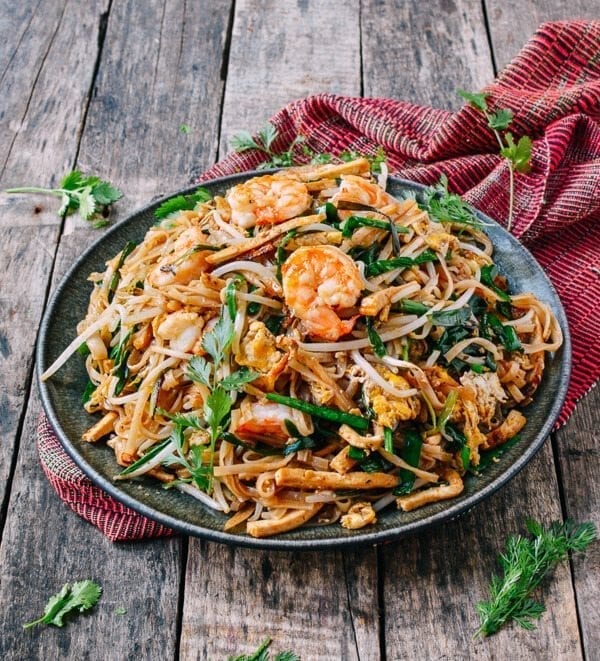
Wide Rice Noodles
If you prefer wider rice noodles like for Pho (Vietnamese Noodle Soup), there are many brands out on the market. It comes down to trial and error and personal preference. We have used both of these brands from our local Asian grocery store, and they both worked out great.
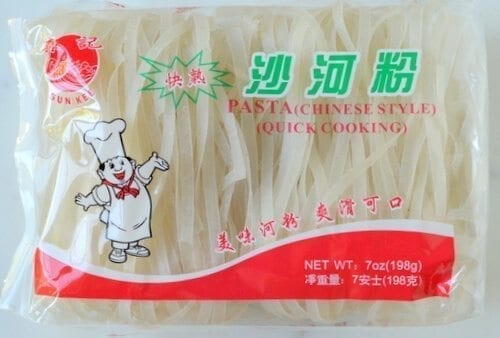
As you can see, a bit of finesse and knowledge is required when noodle shopping. "Chinese style pasta" isn't really the best translation for this kind of noodle! When in doubt, go by the look of the noodles rather than the text, as sometimes it can be misleading or just downright silly.
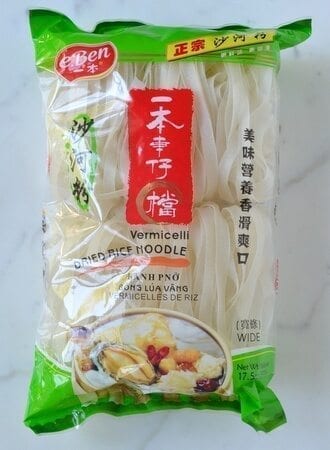
Drunken Noodles Pad Kee Mao is a favorite dish to make with these dried rice noodles!
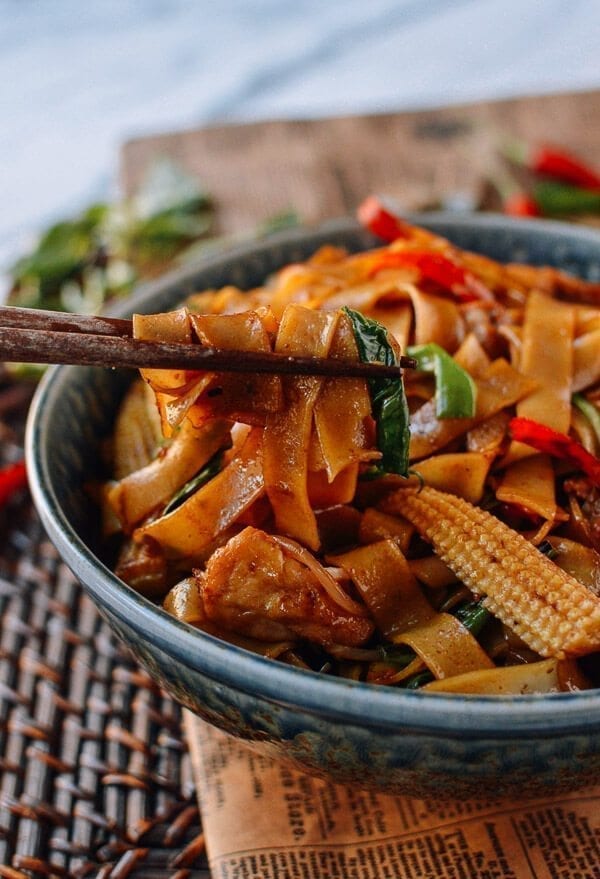
JiangXi Rice Noodles
Jiāngxī mǐxiàn or 江西 米线 are a type of rice noodles eaten all over the southwestern region of China. They come in different thicknesses, sometimes with different names on the labels, like "rice stick" and "rice vermicelli." but in general the mi xian rice noodles from that region is thicker like spaghetti. When using dried rice noodles, follow the instructions on the package or soak them in warm water for 1 hour and they're ready to use in a noodle soup or a stir fried noodle dish.
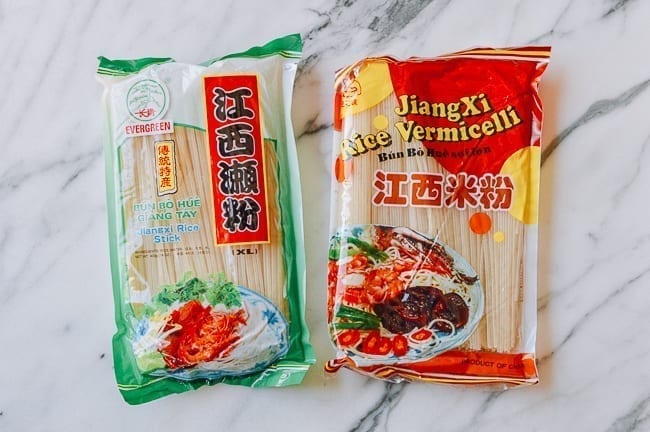
You can also get fresh rice noodles in the refrigerated section:
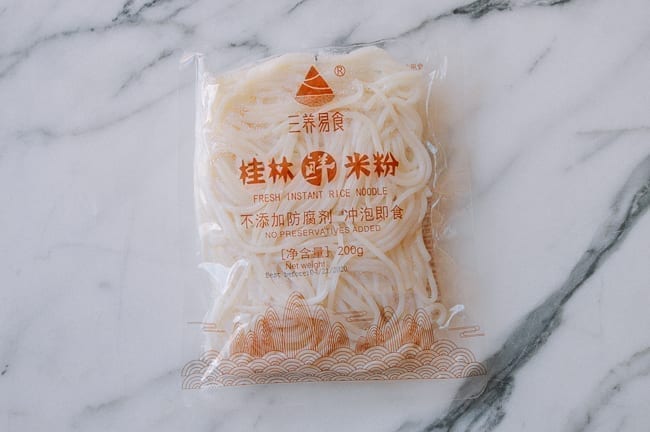
Judy's Yunnan Rice Noodle Soup Recipe uses these noodles but you can experiment and use these noodles for many of our other noodle recipes.
Knife Sliced Noodles (Ribbon Noodles)
These decidedly festive noodles are a crowd pleaser. Why? Something about that wide width and the slightly fluted edges is great for holding onto sauce.
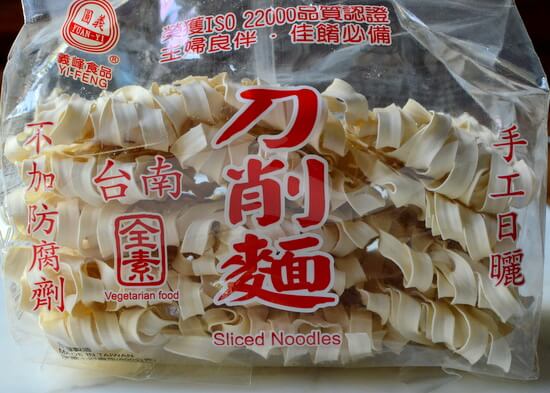
These noodles are called dao xiao mian 刀 削面or literally, knife cut noodles.This packaged noodle is a reproduction of noodles that are sliced manually from a large mound of dough right into a soup pot. For those of us who don't have a personal noodle slicing master hanging around, these will have to do.
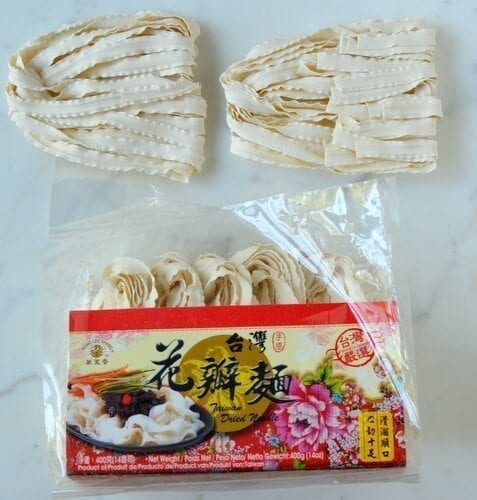
Beijing Fried Sauce Noodles – Zha Jiang Mian and 15-Minute Chinese Hot Oil Noodles (You Po Mian) are some favorites that use these noodles. Beijing zhajiang mein is pictured below
.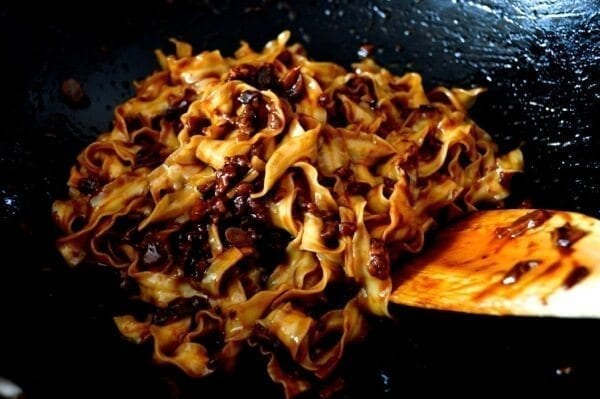
Dried Thin Noodles for Soup
Sometimes you just need a thin dry noodles that cooks up quickly for noodle soups. Noodles range from thinner than Angel hair, to a slightly more moderate thickness. Pick what you like! Most recipes that call for a typical dried white noodle won't be made or broken by the thickness of the noodle or even by the ethnicity of the brand (note that the first picture is a Japanese style noodle and the second is a Korean style noodle). Personal preference is king with this one.
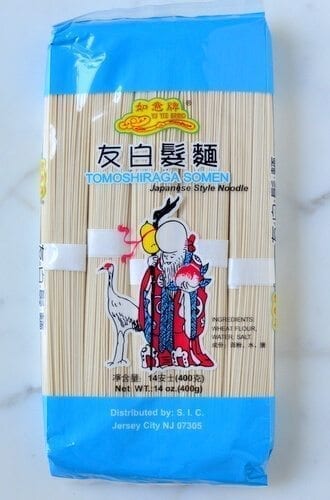

Rice Cakes
Rice cakes have a chewy consistency that's kind of like a thick noodle. They're a family favorite in soups and stir-fries. They come in different shapes, but the most common ones used in Chinese cooking are the small, oval-shaped ones. Some recipes where these delicious rice cakes are the star include: Stir-fried Rice Cakes (Nian Gao), Steak and Scallion Rice Cake Stir-Fry, and Shanghai Rice Cakes with Greens.
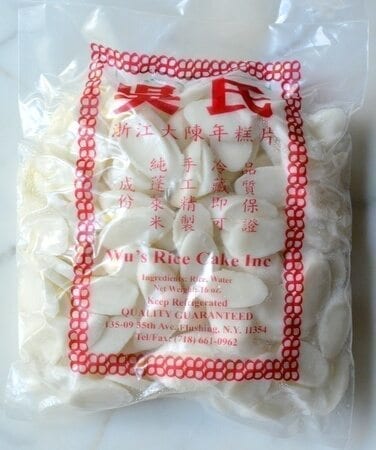
Try this classic Shanghai Rice cake dish at home and make us proud!
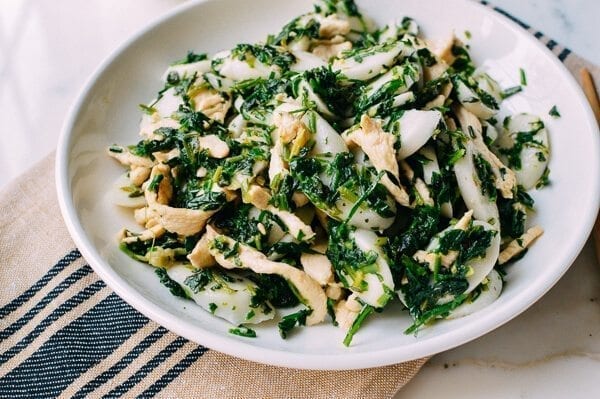
Ho Fun (Fresh Wide Rice Noodles)
Ho Fun rice noodles are white Chinese noodles sold in long sheets that have been steamed, lightly oiled and folded. They're soft and flexible and very delicious. They're used in both soups and stir-fries as well as a wrapper for various stuffings (All of you dim sum junkies know what we're talking about!). If you are lucky and have a well stocked Asian store, you can get freshly made noodles at a decent price. The local store we frequent has them delivered fresh on the weekends, and they are still warm if you get there early in the day!
So that everyone is clear–the noodles are called ho fun noodles, cheung fun is the sheets of noodle that are often stuffed and rolled for dim sum recipes, and chow fun is a name that comes from our lustrous Americanized Chinese food history.
Phew!
As you were.
If you don't have the luxury of luxury of buying fresh rice noodles for $1.79 a piece at your local Chinese grocery, then you may want to try your hand at making your own homemade rice noodles using Judy's Homemade Rice Noodles recipe.
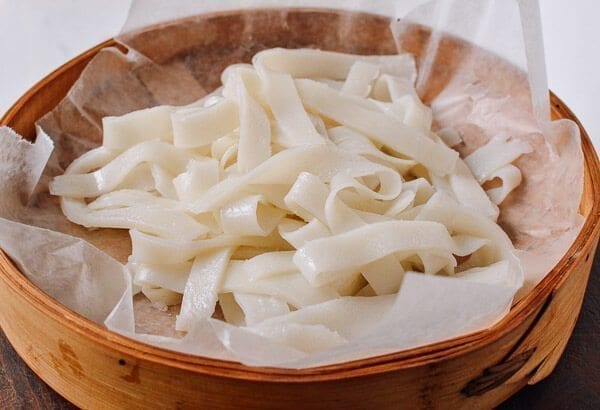
Our Cheung Fun Recipe (Homemade Rice Noodles), Two Ways yields a softer noodle for cheung fun so use Judy's recipe if you want stir fried rice noodles.
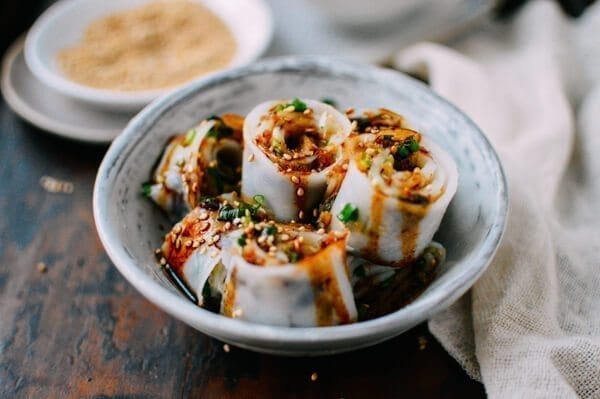
The classic ho fun dish everyone loves the Beef Chow Fun Noodles that we often order when we go out for dim sum.
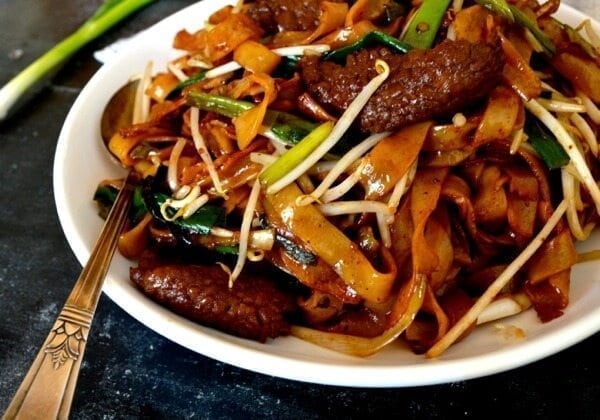
Or go vegetarian with our vegetable chow fun!
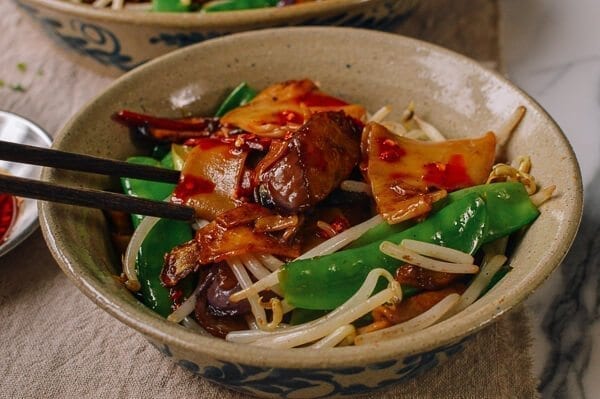
Japanese Udon Noodle
Fresh Japanese Udon Noodles are also found in many Asian grocery stores, and, aside from making Udon noodle soup, you can also make stir fried noodle dishes like these Shanghai Fried noodles.
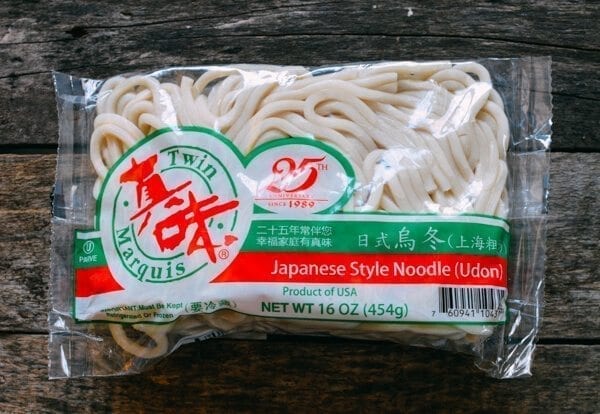
Hot out of the wok Shanghai Fried Noodles!
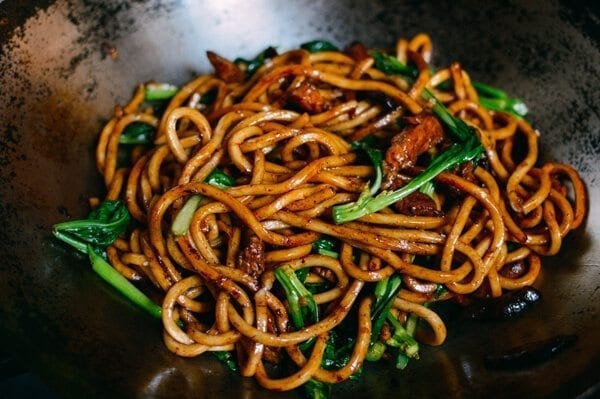
Cellophane (Mung Bean) Vermicelli
Don't confuse these with rice vermicelli noodles, which look a bit similar. These are made from mung beans, and must be either boiled or soaked in cold water for five minutes before cooking. They're usually used in soups. When cooked they're translucent and slightly chewy. They're sold in small bunches tied with twine in Chinese grocery stores.
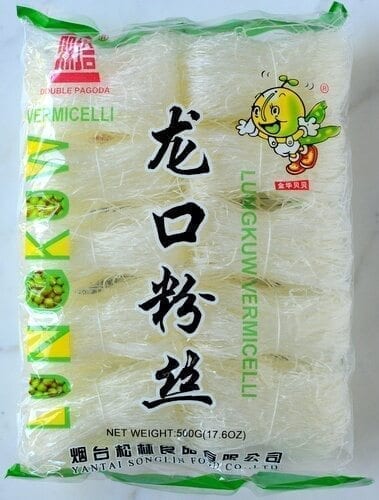
These noodles are delicious little sponges–they soak up all of the sauce and retain the flavors. Noodle-y perfection!
Is your head spinning with the words rice, vermicelli, and noodles, yet? No? Press on! Better yet, check out cone of our recipes using these glass noodles including Steamed Shrimp with glass noodles or Braised Daikon with Salted Pork & Glass Noodles.
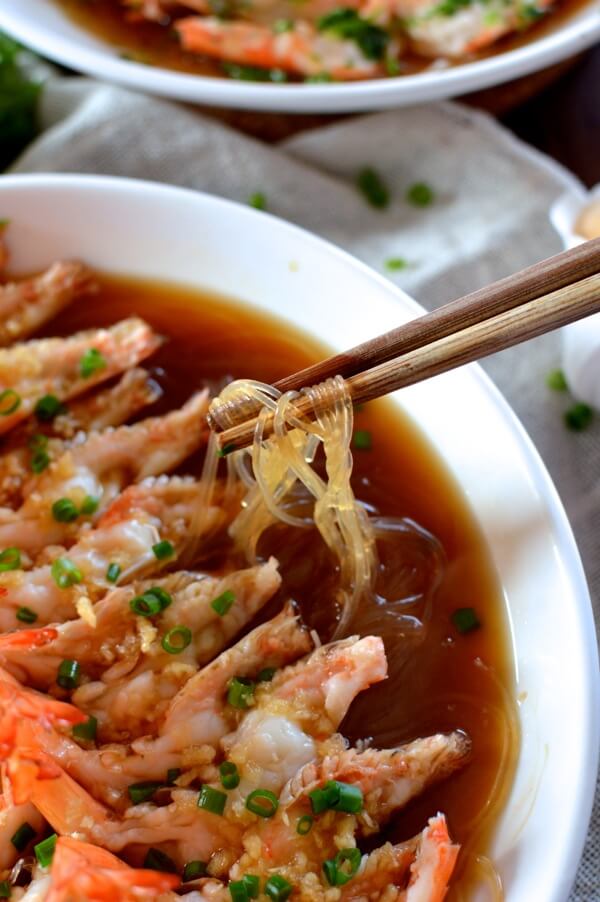
You can buy mung bean glass noodles in individual packs as well.
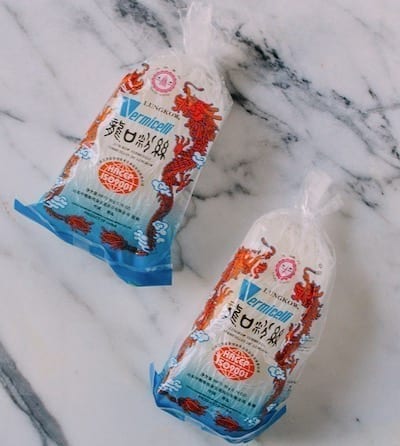
Shop for Mung Bean Glass Noodles and Amazon
Long Life Noodles (yī miàn, 伊面) or yi mein
Long Life Noodles (yī miàn, 伊面) or yi mein, symbolize longevity and can always be found on the banquet table at Chinese celebrations. Any type of long noodle symbolizes longevity, but Yi Mein (also known as e-fu noodles are a more festive and traditional take on the idea. Chinese longevity noodles, as they are sometimes called have a spongy chewy texture since they are fried before they are dried. Spongy may not sound appetizing but the texture is nice as long as you don't overcook them. Chinese longevity noodles are a bit expensive but it's totally worth making at home since a dish of these noodles from a fine restaurant will be quite expensive! 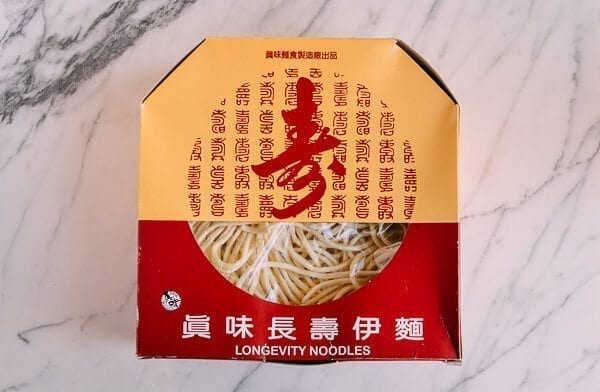
Try our Banquet style Yi Mein Longevity Noodle recipe and you'll never go back for this dish at a restaurant unless someone is getting married or you're celebrating the Lunar New year. You can make this delicious banquet Long life Yi Mein Noodle dish at home!
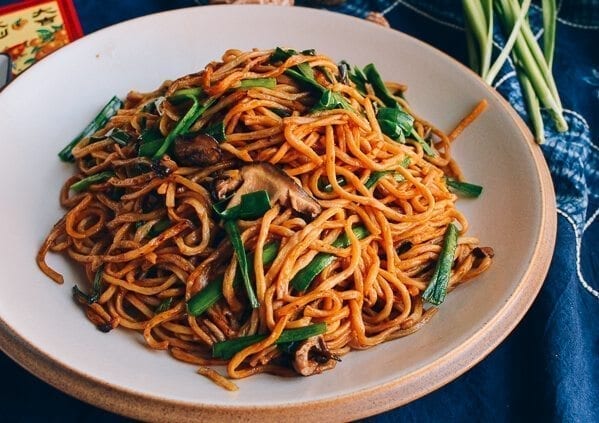
Ramen Noodles
Fresh Japanese Ramen noodles can be found in Asian stores, gasp, withoutthe flavor packets! But, of course, most of us are familiar with the instant, one meal ramen noodles that feed poor college students and starving artists.
But don't think Maruchan is the be all and the end all. Chinese noodle companies jumped on the instant noodle bandwagon long ago, and there is a huge assortment of Chinese ramen flavors. If you have ramen noodles lying around, you must try our Stir-Fried Vegetable Ramen. If you're in the market to get some delivered to your doorstep, they are available by the box on Amazon! Ahh the world we live in.

Maruchan Ramen Noodle Soup, Chicken Flavor, 3 oz, 36 Packs
Fresh Ramen Noodles
Fresh Ramen noodles are also readily available at local Asian grocery stores and while they are not as convenient as dry packaged ramen noodles, they have a much better taste and texture. Fresh made noodles like the picture below can be found in markets in Asia. Another important but lesser-known fact is that ramen noodles are also known as alkaline noodles. Although there are different brands and types, the most readily available alkaline noodles available in Asian grocery stores are alkaline fresh ramen noodles.
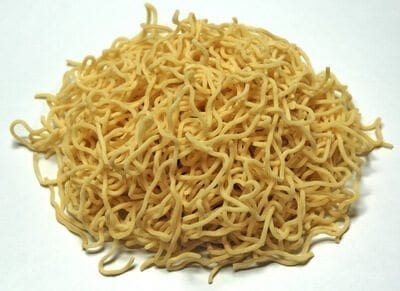
Packaged noodles are now showing up in Chinese and Asian grocery stores in the US. They come with a variety of flavor packets like the dried kind but also some plain packets. The one pictured below comes with miso flavoring.
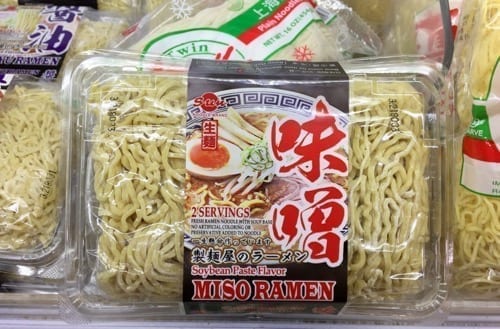
The plain packets are best if you are going to make your own broth or a pan fried ramen.

We used dried noodles in our vegetable ramen recipe but you can certainly try it with fresh ramen noodles if you can find it.
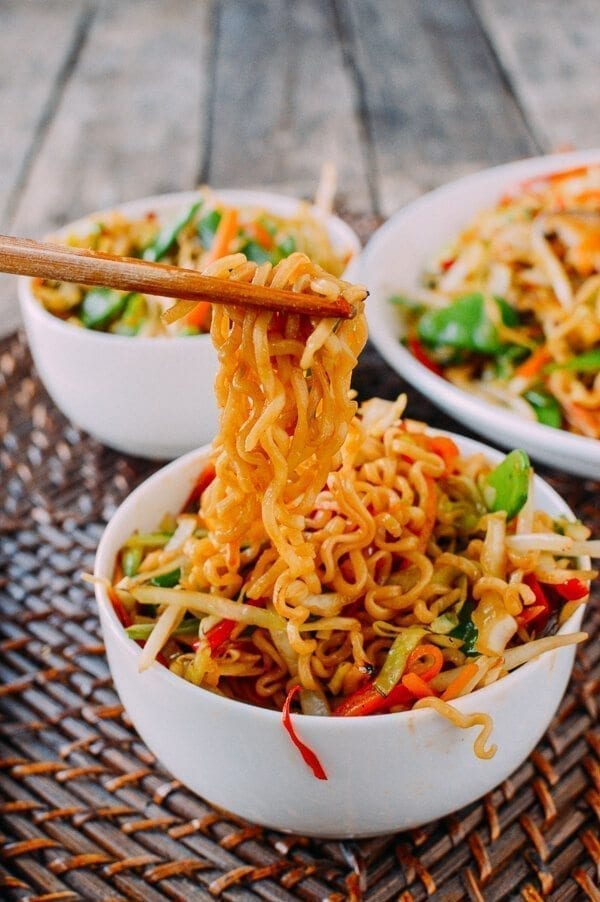
Yakisoba Noodles
Yakisoba in Japanese is literally "fried noodles" and is a popular stir-fried noodle dish whose preparation is similar to the Chinese lo mein dish. Although soba noodles frequently are buckwheat noodles, yakisoba noodles are generally made from wheat flour. We use it is our own Chicken Yakisoba recipe courtesy of Sarah!
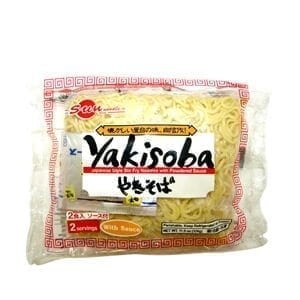
Sweet Potato Starch Noodles
These are used for Korean cooking (japchae, anyone?) but have a similar consistency to mung bean noodles. As a result they can be applied pretty flawlessly to Chinese cooking.
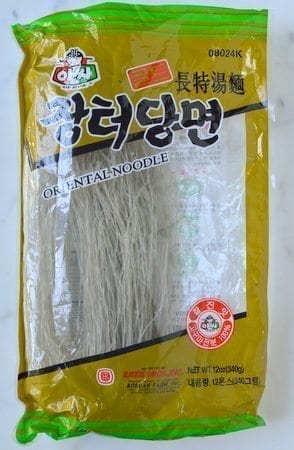
Broad Bean Glass Noodles
Broad bean noodles are a kind of wide glass noodle that is similar in appearance to rice noodles and mung bean noodles, but are slightly different. These broad bean (aka fava bean) noodles are much sturdier throughout cooking and have a nice chewy texture.
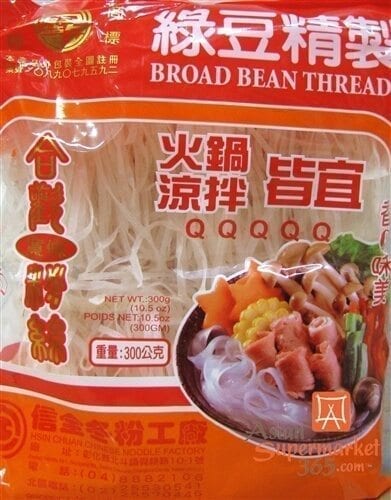
We use these in our Vegetable Noodles With Shrimp recipe.
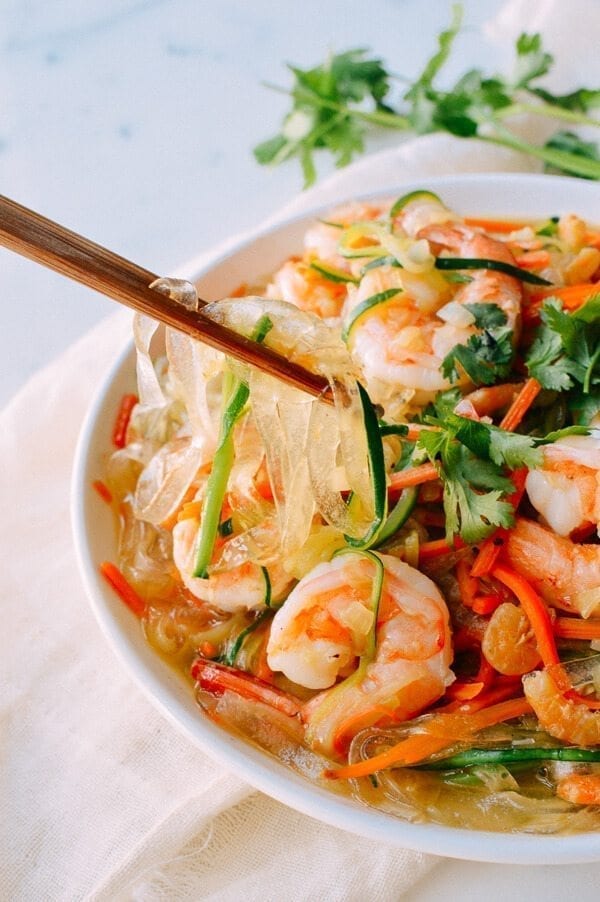
And like most translucent white noodles on this list, they do need to be soaked for 30 minutes before cooking.
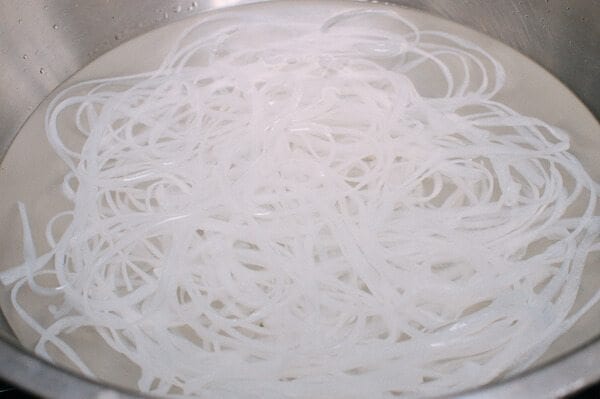
If you have trouble finding these broad bean noodles locally, you can definitely substitute mung bean vermicelli noodles, which are more common (we recently used some in our recipe for Ants Climbing a Tree. You'd just have to soak them for less time (10 minutes, rather than 30), and then add them to the dish in the last 2 minutes of cooking.
Fresh Wonton Egg Noodles
These noodles are similar to the Hong Kong style pan fried noodles, to the point that you almost can't tell the difference. These wonton noodles, however, are generally a bit chewier and more elastic than their pan fried cousins. We say be authentic and use the right noodles for the right recipes if you can, but this is one instance where no one would probably be the wiser!
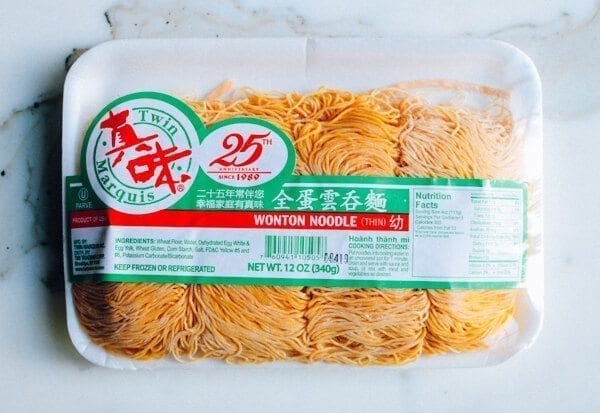
Wonton noodles come in a wider version as well for those of you who prefer wider noodles over the thinner Hong Kong style noodles.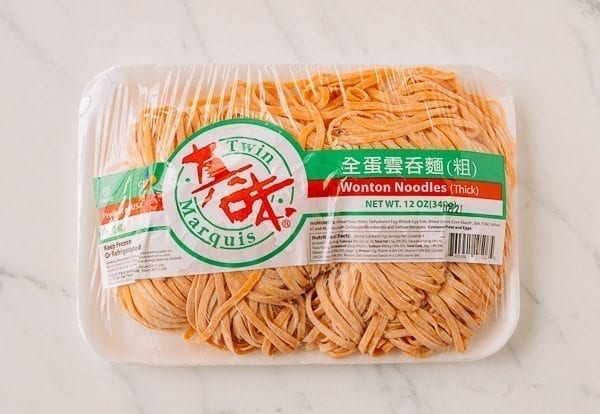
These noodles as used in Cantonese Wonton Noodle Soup, a classic combination of noodles and wontons.
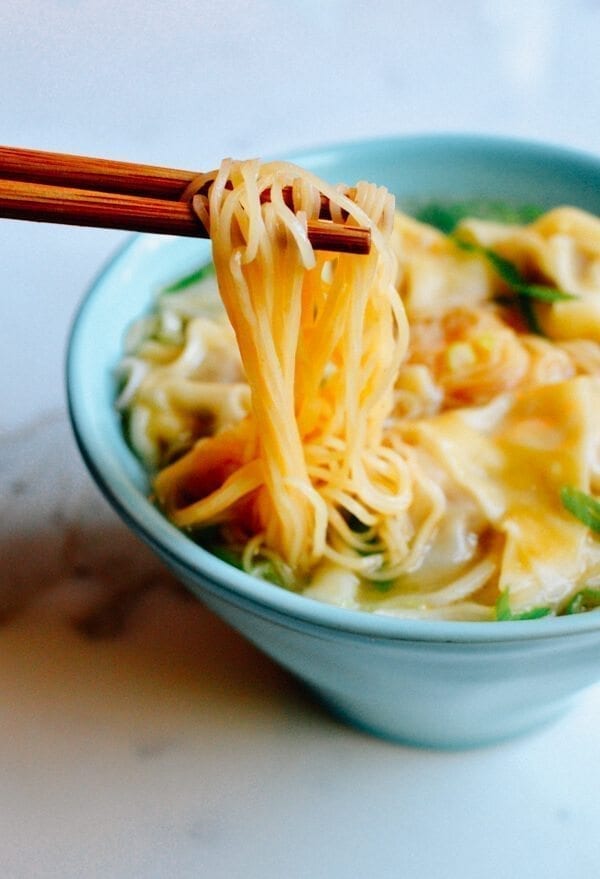
Wonton Wrappers and Dumpling Skins
These can be found in the refrigerated section of the Chinese grocery store. You'll see multiple kinds: the round skins are used to make pot-stickers, while the square skins are used for wontons. The wrappers come in both a yellow egg variety and a white variety and vary in thickness. The thinner varieties are for boiling, while the thicker varieties can be boiled or used in our pan-fried or deep-fried recipes. We use the thicker white version for most of our dumpling recipes.
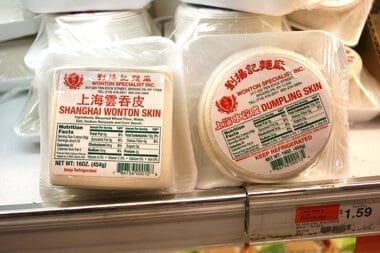
The thinner yellow wrappers are made with egg, which makes them slightly softer, yet they hold up a little better in boiling water. These are used for Cantonese or Hong Kong style wontons. From our experience, the egg-based wrappers are also better for making deep fried wontons. That said, there are some products that add yellow coloring without the eggs, probably because people just like them yellow.
If you are going for the authentic Cantonese or Hong Kong wonton, then you'll want the thinnest egg based wrapper like the one below.
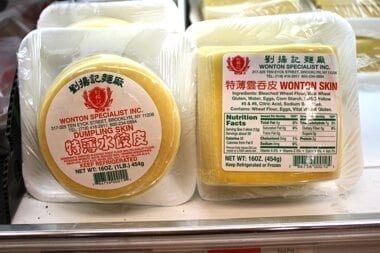
If you go into a well-stocked Asian grocery store, picking through wrappers can be quite confusing, but, like anything else, be adventurous and experiment with different types and different brands.
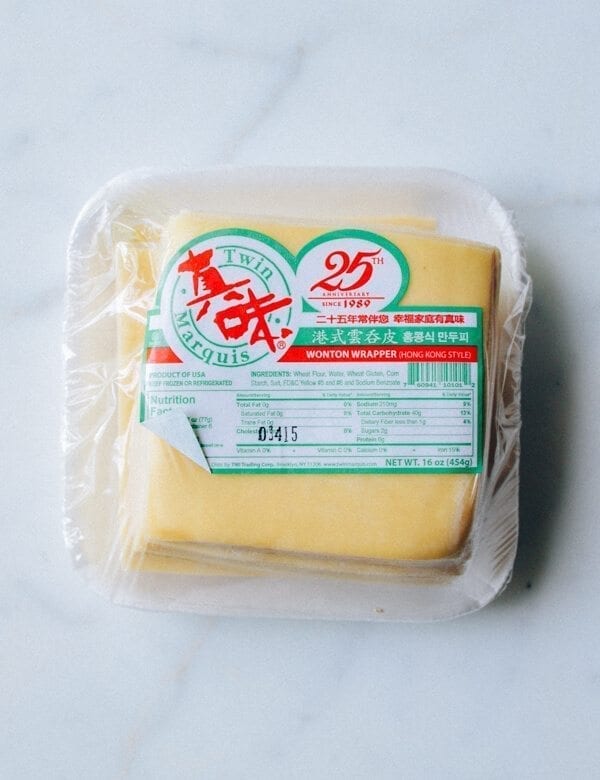
I mean, how may times did it take you to find your favorite wheat bread or mustard? Pick up a pack and follow our Simple Wonton Soup recipe or go for the San Xian Wonton soup!
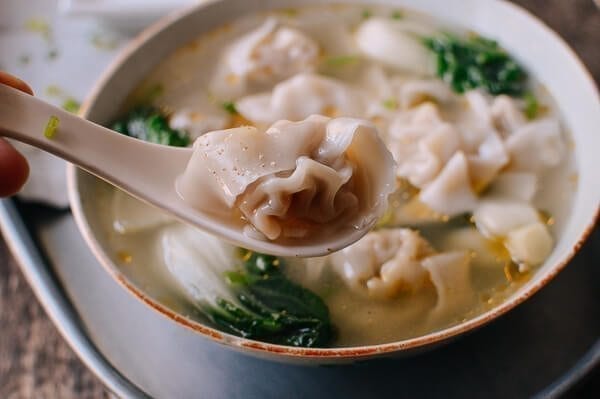
Dumpling Skins
Pre-made dumpling wrappers come in both yellow and white versions and also vary in thickness although they are definitely thicker than wonton wrappers. Do keep in mind that wonton wrappers are most definitely different from dumpling wrappers. As you can see in the pictures, the labels are fairly clear for the recommended uses. Even in our classic only dumpling recipe you'll ever need recipe, where we use store-bought, you can also make your own!
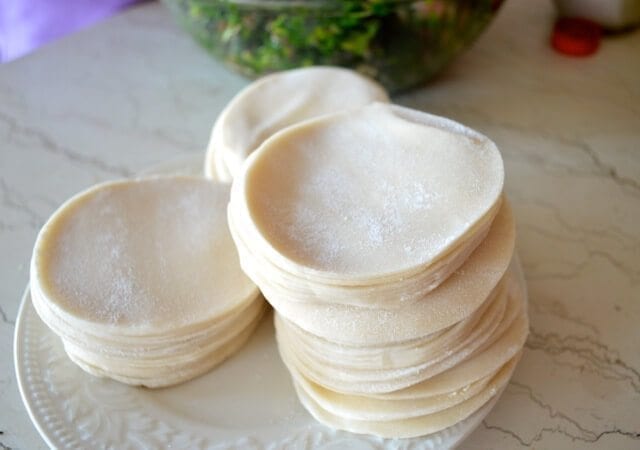
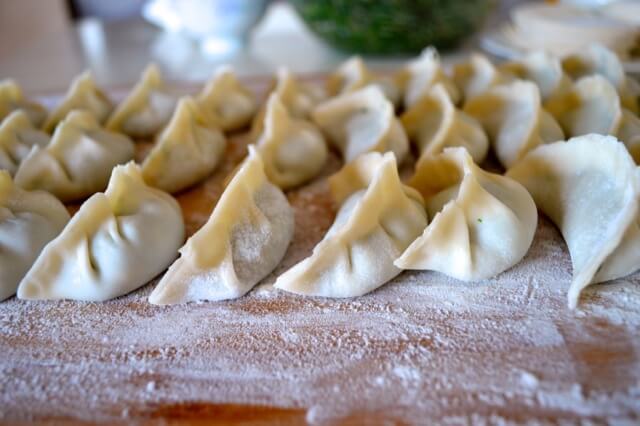
Try making your own dumpling wrappers by following the Pork Chive Dumplings (and homemade dumpling wrappers!) recipe and you'll never buy them again, unless it's for convenience or saving time. Nothing beats homemade!
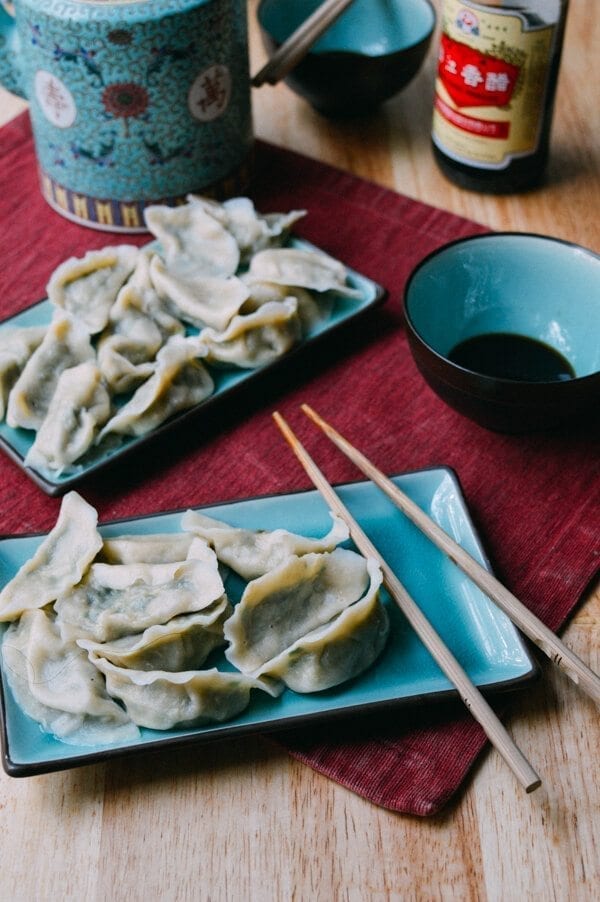
You can make your own dumpling skins using the recipe in Vegetable dumplings as the basic recipe is the same.
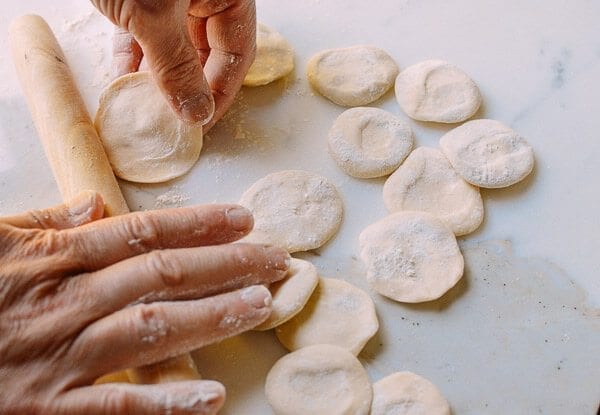
Spring Roll Wrappers – Chinese
You can find these in the refrigerated section of the Chinese grocery store. Unlike egg rolls, which are an American thing, spring rolls are legitimately Chinese. What's more, they're obviously seriously delicious.
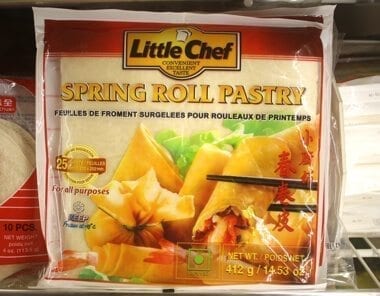
Better yet, you can follow our easy-to-make recipe for Shanghai Style Spring Rolls or Cantonese Style Spring Rolls.
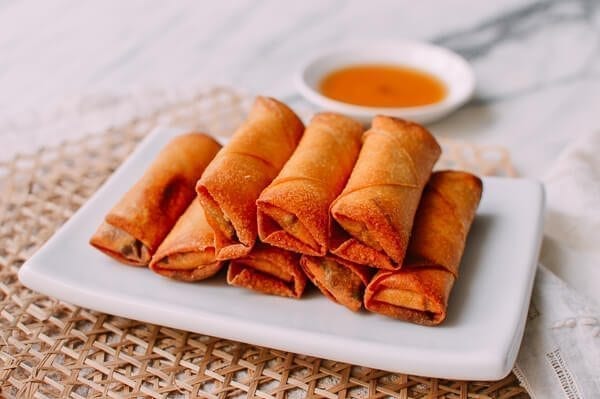
Vietnamese Spring Roll Wrappers – (bánh tráng)
These Spring roll wrappers are used for Vietnamese type spring rolls but they can also be used for the Chinese Spring rolls for a gluten free roll. We have not used these wrapper in our recipes yet but expect to soon. So many recipes to and dishes to make! This one below is the square version but they come in the round versions as well. Bánh tráng are made with rice flour but some brands also add tapioca starch. They are easy to work with and once hydrated, you don't need any additional cornstarch or egg to seal them!
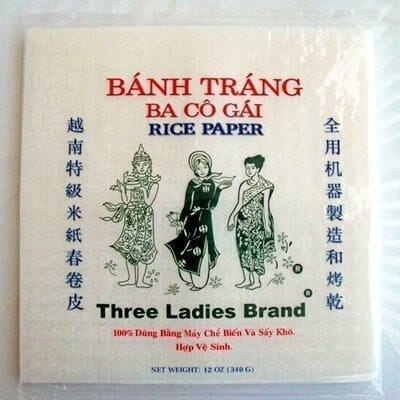
Shop for Vietnamese Rice Paper Wrappers on Amazon
Pick up a pack of these Vietnamese spring roll wrappers and make some classic Vietnamese summer rolls today!
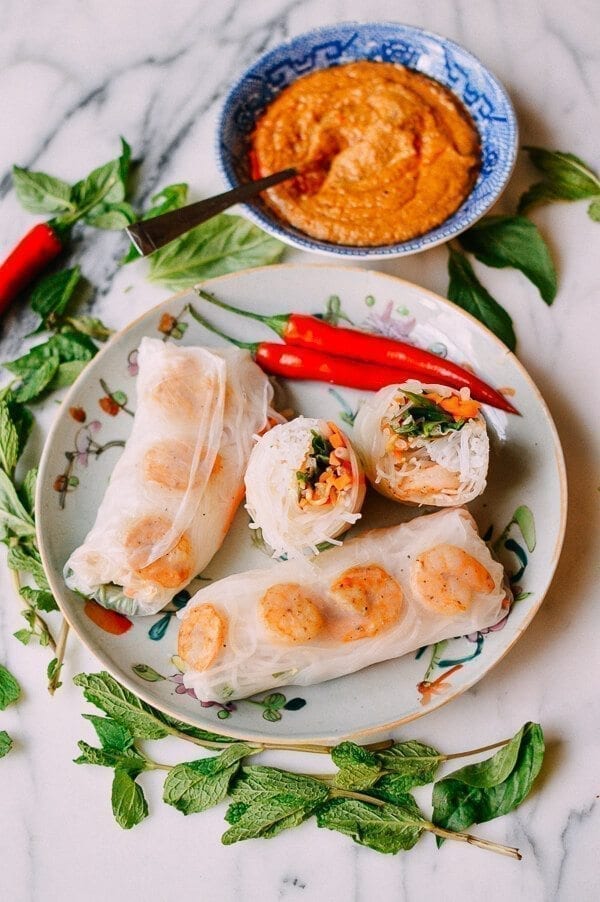
Egg Roll Skins
These egg roll skins are not as popular as they once were but classic egg rolls are obviously here to stay. They are sold in Asian stores but we've seen them in some mainstream supermarkets across the US. Pick up a pack, and skip the takeout containers with our Classic Take-out Egg Roll recipe!
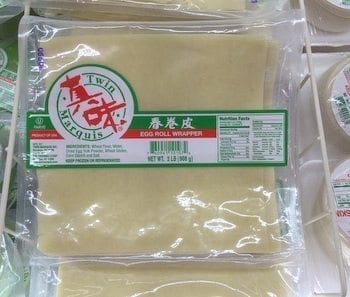
Pick up a pack, and skip the takeout containers with our Classic Take-out Egg Roll recipe!
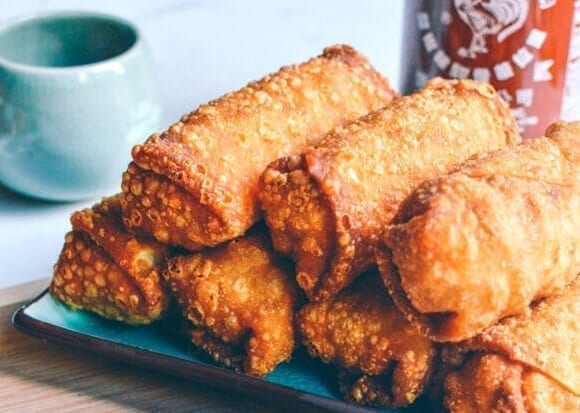
or maybe Sarah's Avocado egg rolls recipe.
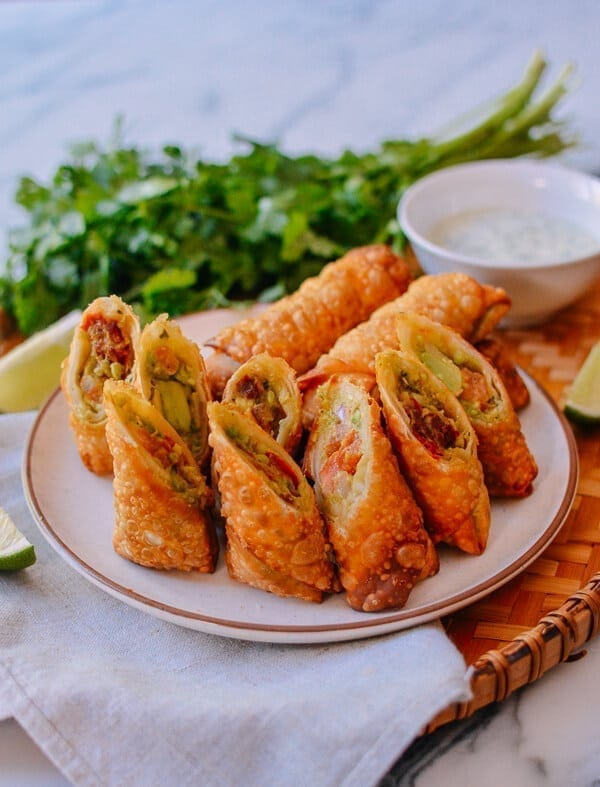
Source: https://thewoksoflife.com/chinese-ingredients-glossary/chinese-noodles-wrappers/

0 Response to "90s Chowking Beef Wanton Noodles Recipe"
Post a Comment